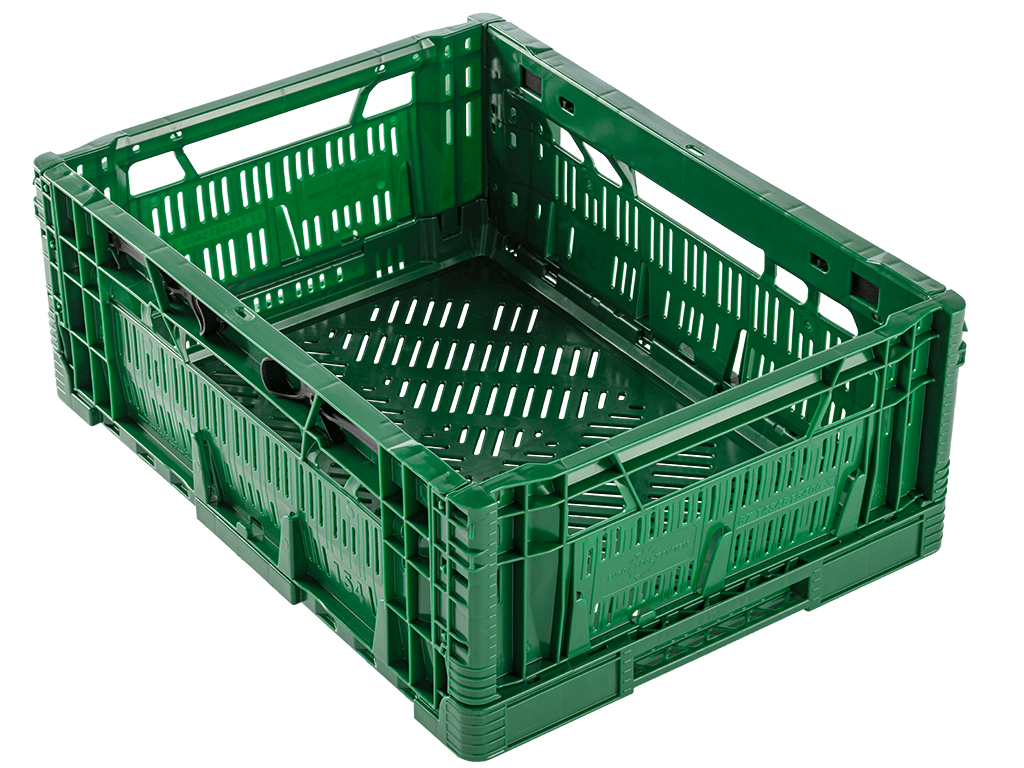In mould Labeling
With In Mould Labeling (IML), a label is placed inside the mould. Next, the injection moulding process takes place in which the label and the injected, liquid plastic are connected to each other. In this way, the label becomes an inseparable part of your product. Such a label can carry a commercial message, but also a functional one such as a barcode or an RFID label. So with a simple scan of a crate, for example, you can read out the exact contents directly. Another functional example is a track & trace code.
With functional use: cost-reducing, because fewer actions.
Label remains visible and resists cleaning chemicals.
Gives your product more recognisability and brand value.
Give the same product different looks with one mold.

Product samples
The folding crates that roll off the conveyor belt in large numbers are bar-coded. Essential if you want to work quickly, efficiently and accurately. If all information is on a barcode that can be read easily, you reduce the number of (human) actions and therefore the total costs.
Our bicycle basket Mybasket has an In Mould Label. In this way, your product too can easily be provided with a distinctive design.
Other injection moulding techniques
Hollarts' machinery is equipped with various injection techniques that complement the standard plastic injection moulding. In step 2 of our approach, we are often already able to determine which technique best meets your requirements.


